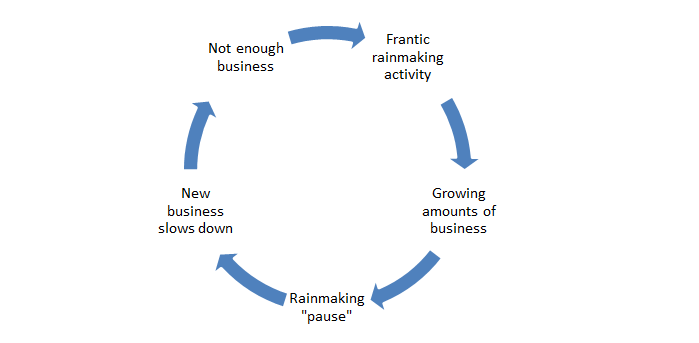“Welcome!”
What greeting do your clients receive when they contact your office? Do clients feel that they’re welcome? Or are they ever left with the impression that they’re interrupting something more important?
How your staff handles client contact (or how you handle it, if your practice doesn’t include staff members) will have a significant, though probably unspoken, impact on your client engagements. What’s more, whoever answers the telephone and greets visitors constitutes the first line of your marketing team, since satisfying current clients may lead to repeat business and referrals.
We so easily fall into the trap of thinking that lawyers provide client service and that receptionists, legal assistants, secretaries, and other staff members provide administrative support that really doesn’t constitute client service. While that may be true on one level, it’s wise to consider how much contact the average client has with your staff as opposed to with you. Unless you’re a sole practitioner without an assistant, chances are reasonably good that the first person your client speaks with is a staff member. The client will then engage with you with that first impression in mind.
It’s easy to identify and weed out those who deliver obviously unacceptable client contact. The example that comes to mind is one I overheard a few years ago while waiting for a colleague to get off a call so we could talk: “Well, [Mr. Smith], I know you think you’re [lawyer’s] only client, but you aren’t!” Fortunately, someone who would make a comment like that is generally either retrained or fired with haste.
But what about the subtle effects of less-offensive but thoughtless behavior? Have you ever stepped back to observe how non-attorney staff in your office interacts with your clients?
Take a lesson from an Atlanta law firm receptionist who turns visitors into welcome guests simply by greeting each visitor as if he matters. Janette engages every person who walked in. She knows returning clients, asks how their travel have been, and makes them feel welcome. When she meet someone new, she exchanges a few comments with them — not the kind of chatter that can annoy someone already on edge, just some niceties that pave the way for further conversation if the visitor so desires. Every person who walks in is greeted, made welcome, and appreciated.
Here are a few areas to consider as you question what your staff contributes to client relations:
- Does the receptionist greet visitors with a smile and a friendly word? Especially in the last few years, many staff members have been asked to do more work with fewer resources, and stress has increased. It’s important not to allow that stress to reach the client.
- How are telephones answered? Answering by barking out a business name may be efficient, but it’s hardly welcoming.
- Are clients treated as valued guests and recognized as individuals rather than being lumped together as interchangeable units whose primary characteristic is willingness to pay your invoice?
- Are basic courtesies observed in communications? For example, if emailing an invoice, is a cover note included thanking the client for his or her business?
- Do you introduce clients to your staff members, or are staff members simply nameless, faceless people who interact with clients when you’re unavailable? A simple introduction can transform a staff member from being regarded as only a gatekeeper to being viewed as a valuable resource.
Notice what’s happening when your clients and potential clients interact with your staff. If it’s a negative contribution, how can you help to create a shift? And if it’s a positive contribution, do you acknowledge and reward it?

